
Art Direction
Drama about the friendship between a lonely laborer (Atsumi) and a young woman (Hoshi) unable to enter college.
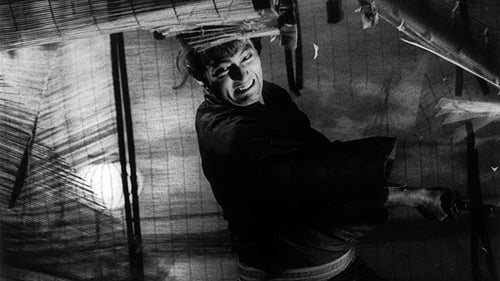
Art Direction
Sem compaixão e em busca de sua glória pessoal, um samurai vaga pelas aldeias espalhando morte, sangue e desprezo, até que é desafiado por um guerreiro tão hábil quanto ele.

Art Direction
Musical actress Noriko feels frustrated by the futility of her affair with a married man. Then she is offered a role in a new production that appears to mirror her own private life... An excellent work that stylishly depicts its gradually evolving heroine.

Art Direction
The Sengoku Era was coming to an end. The monopoly of the ever powerful shogun, Ieyasu Tokugawa, was at a near. Only one man was brave enough to stand in Ieyasu's way - A lone wolf samurai by the name of Kagekatsu Uesugi. Inspired by Uesugi's courage to revolt, a young samurai warrior, Touzou Kuruma decides to join the fight. Their target: the Tamonyama Castle.

Art Direction
A young woman begins murdering all those responsible for her ailing father's condition. Because the girl is so outwardly sweet and innocent, the detective looking into the deaths does not suspect her.

Art Direction

Art Direction
Hanjiro is a struggling painter that shares a tiny apartment in the back streets of Ginza with his jazz pianist friend who works at a bar. When he and his sweet heart, Hisako decide to get married, Hanjiro is faced with a tough decision. Needing to buy a ticket back home to tell his mother the good news, he compromises his creative principles for love and sells his portrait of Hisako. Hisako heads to the station to see him off, but gets hit by a car...

Art Direction
A touching story of a girl who sails away from her love to keep her family together.

Production Design
Kohei Misugi works in a vegetable market, but his ambition is to be a photographer. He is given his first opportunity to demonstrate his talent by the Sakura Film Company which offers him an assignment to "Cover Tokyo" with a camera. But he is disillusioned when he is told he must work together with Miharu, a good looking girl in the film company's publicity department. Then the fun begins.

Art Direction
A woman and her daughter are in love with the same man, a chef at the restaurant that the mother manages. He is slightly crippled from frostbite in his years in Siberian labor camps and considers himself "already dead."

Art Direction
A young doctor falls into a despair of developments. He plans to revenge the disgrace inflicted upon his sister, whose engagement was broken as a result.
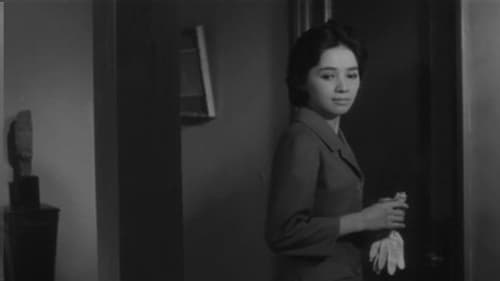
Art Direction
After witnessing a murder, a married woman and a student agree not to meet and see each other out of fear of exposing their affair.

Production Design
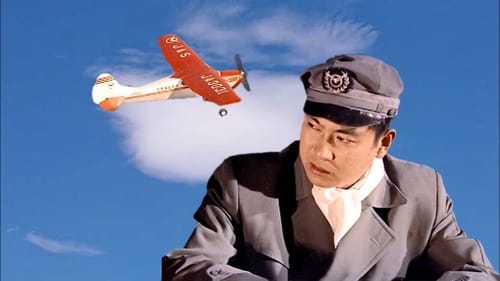
Art Direction
At about the same time as lwami, president of a Tokyo company is murdered by an unknown assailant, it happens that an urgent call has been received from an airline company's office on remote Hachijo Island for a special serum. A Cessna aircraft which has been chartered by a man named Ohashi takes off for the island with the serum piloted by Ishida. But when airborne, Ohashi, who is the murderer of lwami, holds up Ishida at gunpoint and orders him to land on a small island west of Hachijo where a ship is waiting to take him to Hong Kong...

Art Direction

Art Direction
Japanese suspense film.

Art Direction
A longtime hotel employee (Morishige) struggles to bring his old-fashioned ryokan in line with postwar Japanese business practices.

Art Direction
Udaka is a new, post-war city where corruption has already taken hold. A persistent district attorney wants to arrest and convict Katsumata, a laughing, self-confident thug. The D.A. gets an anonymous letter about the suicide five years' before of a city council member. Evidence about the case leads the D.A. to Tachibana, struggling to go straight after involvement with the mob and a prison sentence for killing the man responsible for the rape and suicide of his fiancée. One of Tachibana's friends is Keiko, the daughter of the dead councilman and the ward of another powerful official. How do these stories connect?

Production Design

Art Direction
A woman who grew up in a prestigious household, begins to have an affair outside the marriage.

Art Direction
Shokichi, the owner of the clothing store, lives with his daughter Hideko and plans to open an art gallery. One day, Hideko led a handsome art student, Shohei and a poor painter, Sohei. Sohei’s painting was praised by a great printer at the completion ceremony of the art gallery. Since he became successful as a painter, but he looked quite indifferent. Around the same time, Shohei’s sister brought Sohei’s pictures to the gallery and Shokichi noticed that she was a daughter of his first love.

Art Direction
Nominated for Golden Berlin Bear.

Art Direction
Harsh film about a car dealer who gets into financial trouble.

Art Direction
Eikichi Yamashiro, who is a former contender for the boxing title, works as a manager at a Club Champion owned by his fiancé Natsuko’s father. He lost a title match five years ago as he was besotted by Natsuko, but Eikichi actually cannot give up the dream of the championship. One day, he meets Shuntaro Fuma, who is a punk kid but a promising boxer, and realizes the dream that he himself could never fulfill. Then, they together start to train with the aim of the title. Mari Shiraki is an up-and-coming ballerina under the patronage of Eikichi as well. Eikichi forbids Shuntaro and Mari to be romantically involved with someone during their training, however, they start to go on a date. (source: Nikkatsu International)

Art Direction
It’s been five years since her husband had passed away. Fuyuko lives in the quiet suburbs, in a small but loving home with her three beautiful daughters. Haruko, the eldest, is the lead vocalist in a band. Natsuko is the conscientious type, who spends her days in ballet classes beautifying herself. The youngest of the three, Akiko is a bookworm who found her niche in philosophy. Although the sisters may appear to have nothing in common, there is one thing they all agree on; "Mom needs a new husband".

Art Direction
The first postwar war movie depicting the tragedy of a special force that shook the world at the end of the Pacific War, with thrill and speed

Art Direction
A woman falls in love with her sister's fiancé.

Art Direction
In the backstreets of Ginza, the boss of a hairdressing salon is found dead, killed by strangulation. The detective on the case soon hears rumors about the murder.

Art Direction
Two brothers compete for the amorous favors of a young woman during a seaside summer of gambling, boating, and drinking.
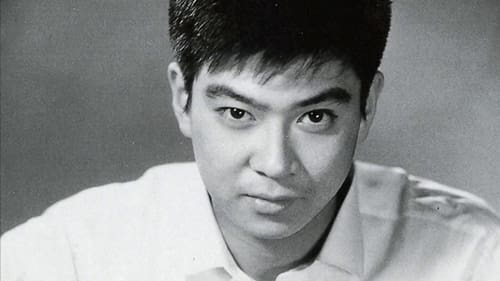
Art Direction
The film tells the story of a group of high school boxing team members who spend their days drinking, sailing and chasing girls, and who more often than not spend their nights getting into brawls. In particular, it focuses upon Tatsuya, a sullen young man, who falls in love with Eiko, a proud upper-class girl.

Art Direction
Fim da Segunda Guerra Mundial. O disciplinado pelotão do capitão Inouye sempre foi bastante musical. Presos pelos ingleses, eles descobrem que uma tropa de japoneses recusa a rendição e será massacrada pelos inimigos. Mizushima, tocador de arpa do grupo, sobe até uma montanha para tocar, na expectativa de convencer os compatriotas a entregarem-se e evitar o banho de sangue.

Art Direction
Christ in Bronze is a 1955 black-and-white Japanese film directed by Minoru Shibuya. It was entered into the 1956 Cannes Film Festival.

Art Direction
The tragedy of the geiko girl Ume and the men who try to pursue her.
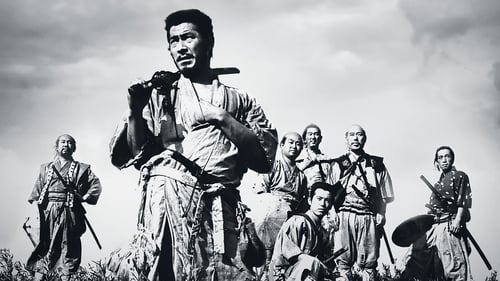
Art Direction
No século XVI, durante a era Sengoku, quando os poderosos samurais de outrora estavam com os dias contados, pois eram agora desprezados pelos seus aristocráticos senhores. Kambei (Takashi Shimura), um guerreiro veterano sem dinheiro, chega em uma aldeia indefesa que foi saqueada repetidamente por ladrões assassinos. Os moradores do vilarejo pedem sua ajuda, fazendo com que Kambei recrute seis outros ronins (samurais sem mestre), que concordam em ensinar os habitantes como devem se defender em troca de comida. Os aldeões dão boas-vindas aos guerreiros e algumas relações começam. Katsushiro (Ko Kimura) se apaixona por uma das mulheres locais, embora os outros ronins mantenham distância dos camponeses. O último dos guerreiros que chega é Kikuchio (Toshiro Mifune), que finge estar qualificado mas na realidade é o filho de um camponês que almeja aceitação.
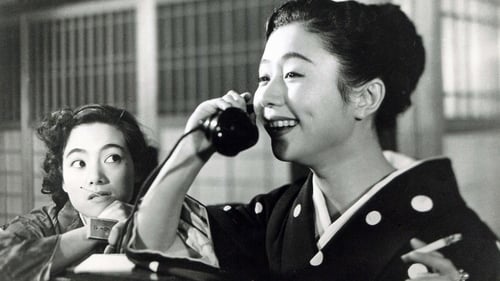
Art Direction
An Inn at Osaka, rarely seen outside Japan, follows the story of an insurance company executive from Tokyo, Mr. Mito, who is demoted to the Osaka office. He takes a room at a small inn and tries to rebuild his life. Notable for its exquisite framing and cinematography, An Inn at Osaka allows its complicated plotlines to disappear behind the minutiae of penury and humiliation that Mito and others suffer during the post-war economic and social reconstruction.

Production Design
Based on the novel by Yoshie Hotta

Art Direction
A married couple looking for an apartment move in with the husband's co-worker, a widower. The husband becomes jealous of the widower and his wife.

Art Direction

Production Design
A Japanese woman, the mistress of an American, falls in love with her servant.
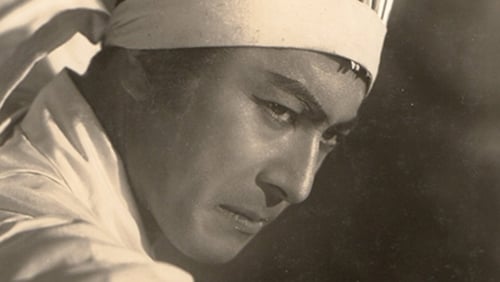
Production Design
The famous showdown at Kagiya corner has been told many times, but never before with the realism and intensity of this version scripted by Kurosawa Akira and starring Mifune Toshiro as the famed swordsman who must face his best friend as they are forced to take opposite sides in a vendetta caused by the murder of a family member. Told mostly in flashback as the avengers await the arrival of their quarry, this film displays true heroism in the face of fear as most of the combatants, while of the samurai class are not skilled swordsmen. They contrast sharply with the true warriors involved in this battle. Araki Mataemon (Mifune), who was not only a direct student of Yagyu Munenori, but the founder of his own sword style under the Yagyu name is a powerful force ready to assist his brother-in-law against the murderer's allies that include not only another noted sword teacher, but the deadly spear of Katsumi no Hanbei.
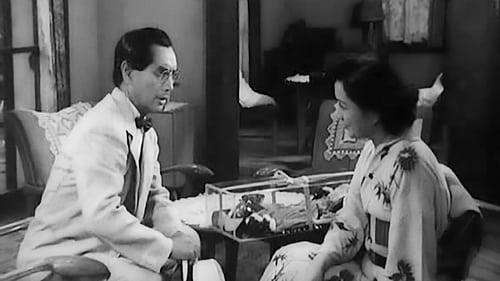
Production Design
Set in post-war Japan, The Lady of Musashino tells the story of Michiko, a disillusioned young woman trapped in a loveless marriage. She confides in her younger cousin, Tsutomo, and the two become close, but decide not to consummate their affair. He instead becomes involved with the flirtatious Tomiko, who is also conducting an affair with Michiko's husband. When Michiko finds that her husband has abandoned her, she decides to take her fate into her own hands.

Production Design
Though recognized worldwide almost exclusively for his colorful kaiju fare, director Ishirō Honda (Godzilla, Rodan, Mothra) was a natural humanist with a particular understanding of the relationship between people and their social environs. His debut fiction feature, The Blue Pearl (Aoi Shinju) – virtually unseen in the west until now – depicts the melodramatic, but keenly-observed interplay between a young man from Tokyo and two ama (pearl divers; literally “women of the sea”) in a superstitious coastal town. Though raised within the same tradition-bound crucible, the two women – Noe and Riu – are portrayed as diametric opposites; the former meek but affectionate, the latter strong-willed but jaded by a tryst with metropolitan life. Nonetheless, Honda provides equal weight to their desires and their ambitions to break free from the social mold imposed upon them from birth.
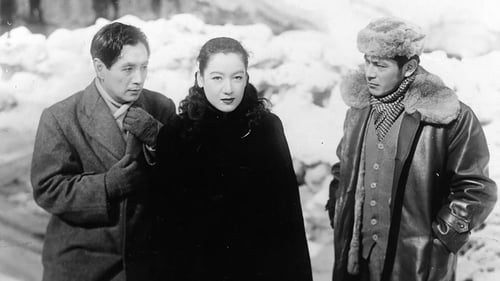
Art Direction
Kurosawa utiliza um texto de peso do mestre Dostoiévski. Conheça a história de Kameda, que viaja para Hokkaiko e acaba se envolvendo com duas mulheres. A tragédia acontece após uma perceber que não é amada e decidir tomar providências drásticas quanto a sua situação. (e 12 - Estimado 12 Anos)

Production Design
Wataru Naohiko who has the prosecutor general as his father became a young composer and its symphony "saint" invoked the world echoed. But his disciple Uchiyama and his best friend prosecutor Daisuke Toki accused his music as a sesame of pause-only technique, not a truly heart-hungry art.

Art Direction
A Japanese melodrama about three sisters, rival fashion companies, and attempted murder by overheated bathroom.
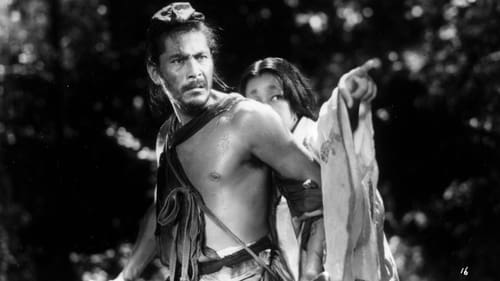
Production Design
No Japão do século XI, um lenhador, um sacerdote e um camponês procuram refúgio de uma tempestade nas ruínas de pedra do Portão de Rashomon. O sacerdote conta detalhes de um julgamento que testemunhou, envolvendo o estupro de Masako e o assassinato do marido dela, Takehiro, um samurai. Em flashback é mostrado o julgamento do bandido Tajomaru, onde acontecem quatro testemunhos, inclusive de Takehiro através de um médium. Cada um é uma "verdade", que entra em conflito com as outras.
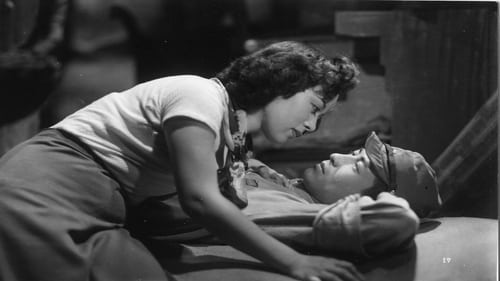
Production Design
Mikami, a Japanese soldier, is captured by Chinese forces. Although able to escape, he is treated with contempt by his peers. After falling in love with a prostitute named Harumi, she convinces him to desert the army and live with her. Directed by Senkichi Taniguchi with a screenplay by Taniguchi and Akira Kurosawa and assistant direction by Ishiro Honda. Kurosawa's final credit as a screenwriter was removed from initial release due to various rewrites.
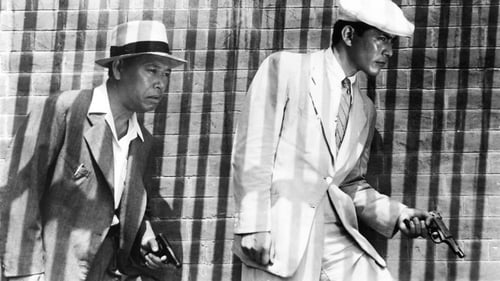
Production Design
Murukami, um jovem investigador de homicídios, é roubado em um ônibus e perde sua pistola. Ele começa uma busca insana atrás de sua preciosa arma, sem sucesso, até receber a ajuda de um sábio e mais experiente detetive chamado Sato. Clássico noir do mestre Akira Kurosawa, que redefiniu o padrão de filmes policiais japoneses. (e 12 - Estimado 12 Anos)

Art Direction
Continuation of The Blue Mountains: Part I. Released a week later.

Art Direction
Teacher Yukiko finds herself in opposition to conservative faculty and villagers after defending a student for being in a relationship with a young man from Tokyo.

Production Design
Teacher Yukiko finds herself in opposition to conservative faculty and villagers after defending a student for being in a relationship with a young man from Tokyo.
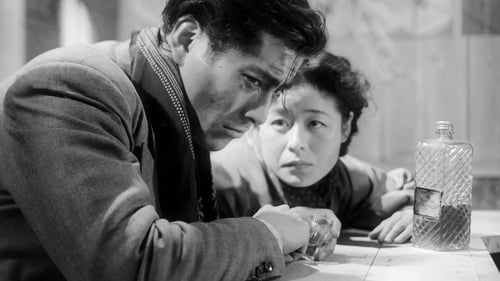
Set Decoration
Um médico bêbado de temperamento esquentado e um gângster com tuberculose muito propenso à violência criam um vínculo instigante.
Depois de uma batalha com criminosos rivais, um gangster de pequeno porte é tratado por um médico alcoólatra no Japão do pós-guerra. O médico diagnostica a tuberculose do jovem gângster, e convence-o a iniciar o tratamento. Os dois desfrutam de uma amizade inquieta até que o ex-chefe do gângster seja libertado da prisão e procure assumir o seu bando novamente. O jovem deficiente perde seu status de chefe de gangue e cai no ostracismo, e finalmente confronta seu ex-chefe em uma batalha até a morte. Um dos filmes mais violentos do diretor. (e 14 - Estimado 14 Anos)

Production Design
Um médico bêbado de temperamento esquentado e um gângster com tuberculose muito propenso à violência criam um vínculo instigante.
Depois de uma batalha com criminosos rivais, um gangster de pequeno porte é tratado por um médico alcoólatra no Japão do pós-guerra. O médico diagnostica a tuberculose do jovem gângster, e convence-o a iniciar o tratamento. Os dois desfrutam de uma amizade inquieta até que o ex-chefe do gângster seja libertado da prisão e procure assumir o seu bando novamente. O jovem deficiente perde seu status de chefe de gangue e cai no ostracismo, e finalmente confronta seu ex-chefe em uma batalha até a morte. Um dos filmes mais violentos do diretor. (e 14 - Estimado 14 Anos)

Production Design
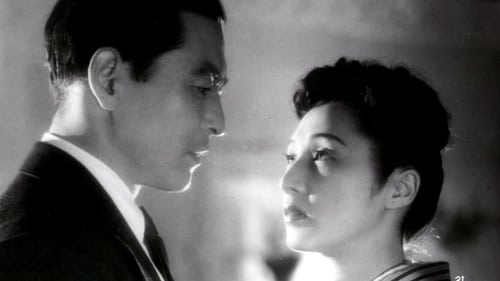
Art Direction
A romance with political overtones about the relationship of a sheltered bourgeois woman and a doctor who devotes himself to caring for the poor. Over a ten-year period - from 1936 through the war - they find each other and are separated again by the events of those tumultuous days.

Art Direction

Art Direction
Stalwart soldiers of the Japanese Empire – Japanese and Korean alike – stand in defense of a military outpost threatened by "bandits."

Art Direction
This epic depicts the battle between Uesugi Kenshin and Takeda Shingen. The focus of the story is the struggle by the unit leader in charge of the main supply wagons and the supply troops to transport materiel to the Uesugi army. To this are added episodes involving an itinerant woman.

Production Design
Ine Onoda, a filha mais velha de uma família de fazendeiros pobres, cria um potro desde que nasce e passa a ama-lo muito. Quando o cavalo cresce, o governo ordena que seja leiloado e vendido ao exército. Ine luta para impedir a venda.

Art Direction
Wartime propaganda filmed by the Japanese in occupied China, Shirley Yamaguchi portrays an orphan rescued from the streets by a kindly Japanese merchant marine officer. Part spy thriller and part Shanghai travelogue, it was part of a popular series known as "Chinese Continental Friendship" made by the occupying Japanese in China.
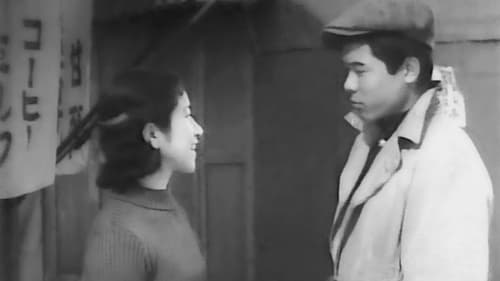
Set Decoration
The Whole Family Works, Mikio Naruse's adaptation of a Sunao Tokunaga novel, feels more of a piece with the writer/director's quietly observant and psychologically charged later work. For the Naruse-familiar, it is an anomaly only in its placement within his filmography—indeed, this could be a film made by the elder, stasis-minded Naruse momentarily inhabiting, through a metaphysical twist of fate, his stylistically exuberant younger self. Set in depression-era Japan around the time of the Sino-Japanese War (which the director evokes, during a brief dream sequence, by dissolving between children's war games and actual adult warfare), The Whole Family Works gently observes a family coming apart at the seams. Ishimura (Musei Tokugawa) is the jobless father of nine children.

Production Design
An early example of the Japanese war film, closer to documentary realism than the kind of propaganda produced at the height of the Pacific War. "A company commander calls on five men. They are to reconnoiter, but on their way they are attacked. Only four of them return. While his companions mourn the fifth straggles back. Soon after comes the order to move out for a general attack. The men know that this time there will be no returning." (Donald Richie)













































